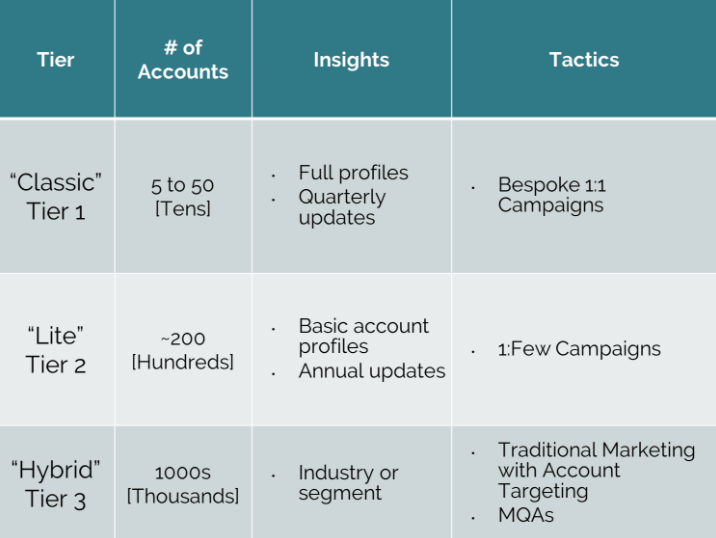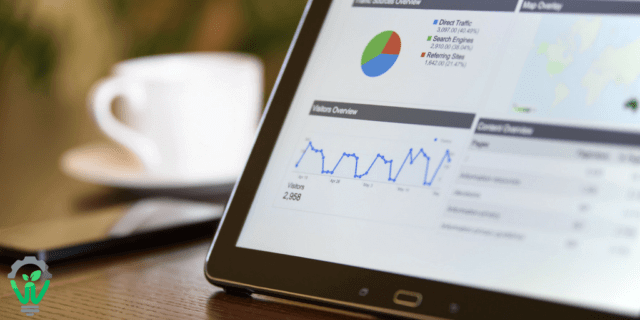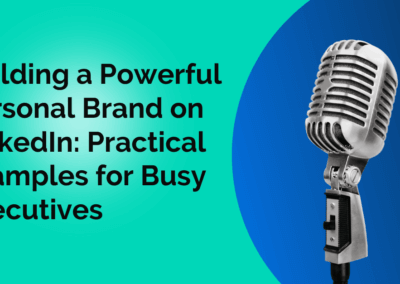One of B2B marketing’s emerging innovations is Account-Based Marketing (ABM). According to SiriusDecisions market research, 70% of respondents spent more on ABM in 2016 than the previous year; an ISTMA study found that almost 85% of marketers who measure ROI (so, the good ones) say ABM generated higher returns than any other marketing approach. That’s HUGE.
Why should small and mid-size companies be implementing ABM? Inbound marketing is a great way to optimize conversion paths for large groups of people — but every prospect is not equal. Account-based marketing lets organizations determine their ideal customer profiles, then market to prime companies on a more targeted level.
Basically, you’re allocating more of your effort to the prospects most likely to convert, and strategically reaching those prospects in carefully crafted and tailored ways.
There are many ways you can market effectively under the ABM umbrella, but we’ve identified, tested and modified some tactics that are providing the best returns. These are five of our best approaches.
Targeted Contact Building
Here’s the process we recommend for determining contact building priorities and evaluating their current database.
Define your tiers – Meaning, which prospects are your most valuable targets? Most organizations have an idea but should flesh this out through persona research and analysis of past closed deals. Tiers should be weighted by size and effort (spend more time on developing key targets). Check out the chart from Engagio on establishing tiers and determining how to allocate your sales and marketing resources.

Create a list of named companies on tiers – Once you have your tiers, it’s time to identify the best fits for each. This may be a manual process, or accomplished through marketing automation and smart lists.
Define functional roles – it’s not enough to just know the company — you also must know who is (or should be) involved in the buying process. Which decision-makers at an organization is it crucial for you to market to?
Evaluate coverage – With key roles and companies established, it’s now time to look at who’s in your database, and which roles you’re missing. On HubSpot, a gap analysis can be built through custom reporting if the reporting add-on is activated. (If you’re an organization that needs help with this, contact us.) You should be able to identify contacts associated with each company, determine which are decision-makers, and discover your current coverage gaps.
Fill the gaps – You now know where your database needs improvement, so it’s time to go find those desired contacts. One-to-one data tools are going to be more effective here than in working from lists; if you have some contact information you may be able to build out a whole record. LinkedIn is a great place to start!
Smart Segmentation and Content
Since account-based marketing relies on true personalization of messaging to have the greatest impact, it’s crucial to segment your database strategically. This can be done by title, industry, lifecycle stage, and many more criteria — including custom properties used by your business. Once properly segmented, you must also consider the content you are sharing — is it tailored to, and useful for, that specific audience? For example, if you are sharing helpful resources geared toward providing value around a specific subject, a CEO at a healthcare company will be interested in different pieces of content than an IT leader at a logistics organization. If you try to find blanket content that appeals to everyone, chances are it’ll be too bland. Using smart content segmentation to show the right content to the right people can decrease email sends while increasing clicks and improving conversion rates. Don’t get lost in endless permutations with little to add but inefficiency, though — test with a few core groupings or distinctions (such as persona) at a time.
Influencer Marketing
Influencer marketing is when the focus is placed on specific key individuals that have influence in a specific industry. As marketing becomes more personal, targeting of particularly desired prospects should increase. Maybe you have five contacts from a specific company, and a few are engaged but the decision-maker lags behind. Here are four effective tactics that could get you in the door or begin building a relationship with your ideal customers.
- Mention target accounts in a positive light in blog posts (they probably have someone monitoring Google Alerts, and we can share these with them directly on social media).
- Interact with them on social media — engage with their posts, directly share content that’s relevant to them, post in groups they’re in, join a group Slack channel they use. Find the venues in which they participate — which may be very different for prospects of different types and industries, so know your persona — and become a helpful community member who just happens to tie back to a company that would make a great partner.
- Request some time on 1 to 1 basis to learn more about their businesses, without selling just yet.
- Invite them to participate in a webinar as a thought leader, or an in-person or online panel discussion.
Video
Short videos offer a great way to talk directly to tiered contacts. With low to no budget, you could record. For best effect, we recommend using quick-hit animated video personalized or especially relevant to that prospect. You’ll want to create these specifically to discuss pain, problems and potential solutions unique to that customer or tier. Then utilize those videos by sharing them as links in targeted email sends and in social media outreach. For further tracking and understanding, upload these videos to Wistia, integrate with HubSpot and enjoy engagement insights — who watched, when they watched, how long they watched and more.
Remarketing
So you’ve done all of this work to get the perfect prospect to your site…and they’ve left without telling you they’re ready to spend six figures on your solution. Since the B2B buying process is longer than B2C, don’t panic — they probably just need more nurturing. Our ideal remarketing mix is a combination of retargeting ads across the internet and paid social advertising for prospects in your top tiers who are in your database and seeing messaging on other channels.
Beware that business buyers’ comfort level with advertising may vary, so be cautious about seeming invasive, but social advertising and retargeting are both great, budget-friendly ways to reach prospects where they are. Facebook’s top-notch segmentation abilities (they’ve collected A LOT of free data) allow you to place ads on the News Feeds of the ripest targets. Like a follow-up email, retargeting is a great way to stray top-of-mind after exchanging information — in this case, a prospect visiting your site or taking a tracked action related to your company.
What tactics are you using to engage tiered accounts? Let us know in the comments. If you’re ready to incorporate ABM into your marketing mix, we’d be happy to consult on strategies tailored to our needs, so drop us a line and we’ll be in touch.




